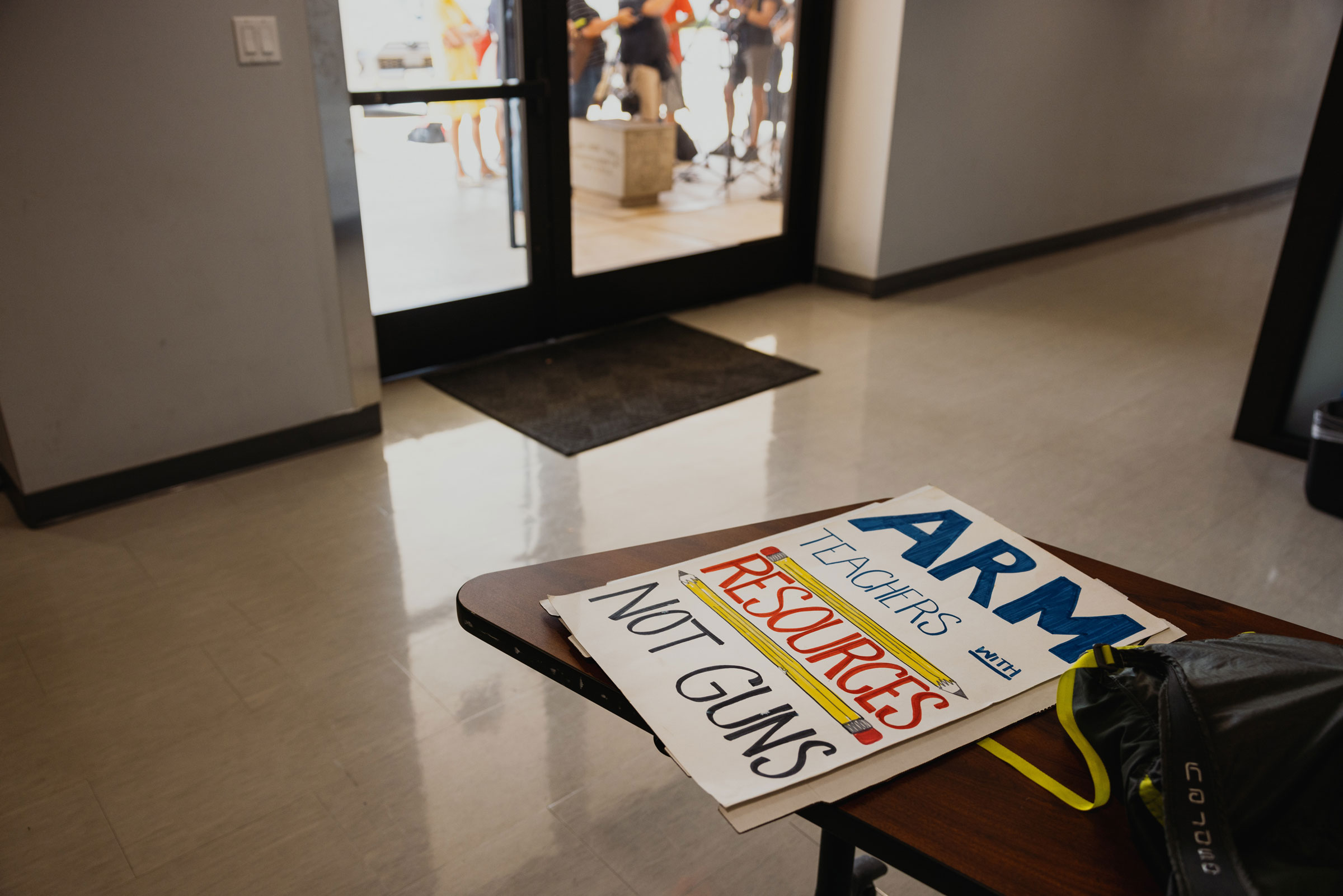
On May 24, 19 students and two teachers were shot and killed at Robb Elementary in Uvalde, Texas—the deadliest mass shooting in our state’s history. I remember staring at my phone as the gut-wrenching headlines rolled in: fourth-grader Miah Cerrillo had covered herself in her classmate’s blood to trick the shooter into thinking that she was already dead; teacher Arnuflo Reyes, who was shot in the arm and lung, lost 11 students in his class; and the body of 10-year-old Maite Yuleana Rodriguez was so disfigured from the bullets that she could only be identified by her lime-green Converse with a heart drawn on the right toe.
On the news, the pictures of grieving families clinging to one another, and of children climbing from windows and sprinting away from the school-turned-war zone with faces twisted in shock and confusion, were haunting. That same night, my friends and I stayed up late sharing articles and TikTok updates with the same heaviness that we’d felt after Parkland, Santa Fe, and Oxford High—now, with the choking pain of another tragedy added to the list. It was the dystopian familiarity of coming of age in the gun era.
Read More: Guns Became the Leading Cause of Death for American Children and Teens in 2020
When I arrived at my Texas high school the next day, an administrator was standing at the door with a cart full of confiscated items. Of course, there were backpacks, which were never allowed during finals week, but I was surprised to see smaller bags, too—brown paper lunches, end-of-the-year gifts for teachers—that my school had never taken up before. Right before I could enter the building, the administrator pointed at my laptop bag. “With what happened yesterday,” she explained in an apologetic whisper, “we’re just on edge.”
I handed over my bag without a second thought because I knew exactly how my administrator was feeling. Like most American schools, we stop breathing over Snapchat threats and warning messages posted to Instagram. It’s only when the kid is caught with a gun in their pants that we can breathe easy again, our grim relief that no one was hurt outweighing the terror of what might have been. Because they could’ve pulled the trigger, we face active-shooter drills that eat up entire class periods and get trained to leave the door locked at all times, no matter who’s begging to be let in—a peer, a principal, a best friend. Sometimes, we even analyze hiding spots or plan for what to do if we’re in the hallways, bathrooms, staircases, or cafeteria when the gunfire starts, despite knowing, deep down, that nothing can really prepare us for a moment like staring down the barrel of an assault rifle.
And with every school shooting—27 so far, in 2022 alone—our fears gain legitimacy. It’s why lawmakers are rallying around more armed on-campus officers and extra security checkpoints, and why Texas Republican Senator Ted Cruz pitched the idea of “having one door that goes in and out of the school.” Other prominent figures like former President Donald Trump and National Rifle Association CEO Wayne LaPierre seem to be reading from the same teleprompter flashing the same incessant buzzword: just “harden” the schools.
But while I understand that the knee-jerk reaction to violence is a push for stronger security, I can’t help but ask questions. Why did I have to give up my laptop bag? Why was my administrator screening for threats like she was a TSA officer or a prison warden instead of a school staffer? And why was my school—an educational institution—shouldering the responsibility of checking for weapons to keep students and staff from being gunned down?
Most of all, I’m stunned that the concept of hardening schools is even a casual talking point. To me, it feels like an admission—that gun violence is the new normal, that school shootings will inevitably happen again, and that there’s nothing we can do but to brace ourselves for the next bang.
Read More: After Uvalde, a Warning From a Sandy Hook Mother
If lawmakers don’t pass critical, common-sense gun laws like universal background checks and 30-day waiting periods for gun sales that are supported by the majority of Americans, will students, already sandwiched between the social pressures of fitting in and the pressure-cooker environment of academics, be forced to brave even more active-shooter drills? Forced to resign ourselves to the constant fear that our hallways might one day turn into a shooting range? And on top of creating lesson plans and grading assignments, will teachers be expected to fend off an armed gunman, a feat that even trained law enforcement officers couldn’t manage in Uvalde?
I don’t want to go through metal detectors and get my clear backpack searched before taking a history test surrounded by steel doors and bulletproof windows. I don’t want my teachers, who are already overworked and underpaid, to lecture with a marker in one hand and a gun in the other. And I don’t want my school to be an impenetrable fortress where I learn how to instinctively run to the nearest exit instead of how to solve a math problem. It shouldn’t have to be that way for students to be safe at school.
More Must-Reads from TIME
- Donald Trump Is TIME's 2024 Person of the Year
- Why We Chose Trump as Person of the Year
- Is Intermittent Fasting Good or Bad for You?
- The 100 Must-Read Books of 2024
- The 20 Best Christmas TV Episodes
- Column: If Optimism Feels Ridiculous Now, Try Hope
- The Future of Climate Action Is Trade Policy
- Merle Bombardieri Is Helping People Make the Baby Decision
Contact us at letters@time.com